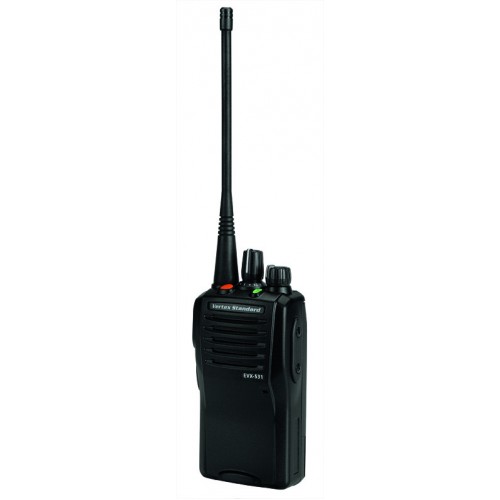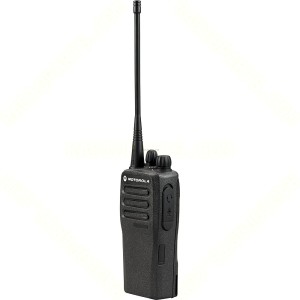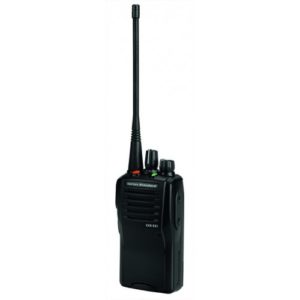
NOTICE: Certain links on this post may earn a commission for Western Hunter Magazine from Amazon or our other affiliate partners when you make a purchase. Thank you for your support.
Communication Solutions for Today’s Hunting
In today’s hunting excursions more people are venturing out further off the beaten path in search of bigger challenges and hunts of a lifetime. There was a time when a couple of Talk-About radios would suffice, but now as hunting has evolved there are more technology options available to hunters to support safety, location, and keeping in touch. Hunting in the West has become a more populated activity, so it has become more common to have hunting partners sitting on two different ridge tops miles apart. The good news is there are cost effective options to stay in communication.
Two-way radio communications has not been a widely covered solution in the hunting world. There is the Garmin Rhino with the GPS/radio combination, the Motorola Talk-About, and other GMRS frequency options. GMRS frequencies are general UHF frequencies set aside for non-commercial use. The challenge with these is that anyone and everyone can have them limiting privacy, as well as being more susceptible to interference. We are going to focus on commercial-grade radio options that will provide you as the hunter/outdoorsman the proper durability, water resistance, and quality you depend on out in the wilderness.
There are two brands of two-way radios we tested with a commercial-grade rating, IP-57 rating, and the capabilities we see as valuable to hunters in both remote and congested areas. An IP-57 rating means that the radio, when all of the seals are properly maintained and in place, can roughly sit in a bucket of water (or up to 1m) for 30 minutes and still operate. It also defines the radio as being dust protected, but not entirely prevented. The first radio is the Motorola CP200D. This model has replaced the old “mainstay” CP200, now offering digital capable models in both UHF and VHF. The second model tested is the Vertex EVX-531. Also a digital capable radio in VHF or UHF. Another reason we chose these two radios was due to their digital capability advantages.

Motorola CP200D
Digital technology in radios? Yes, that’s correct. The main advantage of digital signal over analog is that the precise signal level of the digital signal is not vital. In other words, the digital signal is more immune to the imperfections of electronics which tend to reduce analog signals. Digital signals are also less impervious to noise. Because information is sent in a byte, as opposed to a data bit (0 or 1) it has a lower value of being affected by all levels of noise. Digital signals also enable transmissions over longer distances, meaning you get more coverage and further transmission from a digital over an analog model. Current studies show a 20%+ greater transmission distance using digital technology. Digital signals use less bandwidth, meaning you can cram more information into the same space.
Whew, that was a mouthful and probably more than you wanted to know, so let’s get down to capabilities and comparisons of the Motorola CP200D and Vertex EVX-531. There are specific criteria we looked for that we believe are benefits for the hunter, ensure safety, and provide you the quality you pay for. See the chart below:
| Capability/Option/Info | Motorola CP200D | Vertex EVX-531 |
| # of channels | 16 | 32 |
| VHF or UHF option | Yes, both VHF & UHF | Yes both VHF & UHF |
| IP-57 rating | IP-54 rated,splashproof | Up to 3’ for 30 minutes |
| Digitally Capable | Yes both analog &digtalmodels | One model capable of both analog and digital |
| Battery Life | High Cap Battery, 18.5hrsdigital, 14.5hrsanalog | 15.8hrsdigital, 12hrsanalog |
| Variety of Accessories | Yes, many different earpieces | Limited # of earpieces |
| # of Programmable Keys | 2 | 3 |
| Emergency Alert Ability | Transmit Interrupt feature | Yes |
| Weight | 13.2 ounces | 9.9 ounces |
| Belt clip included | Yes | Yes |
| Channel scan capable | Yes | Yes |
| Whisper mode | No | Yes |
| FCC Licensing Required | Yes | Yes |
| Transmit Interrupt | Yes | Yes in emergency alert |
| Digital Battery Life | 40% more than analog | 40% more than analog |
| Warranty | 2yrmanufacturer’s warranty | 3yrmanufacturer’s warranty |
| MSRP | $568.33 | $457.00 |
Now before we get too far, we want to make sure as our valued readers and supporters that you are aware of certain restrictions of using radios when hunting. Some states completely restrict the use of radios for hunting purposes of any kind. Please consult the local Game and Fish offices in the states you are going to be hunting in for their individual rules and regulations. Certain hunting and conservation organizations also restrict the use of radios while hunting in regards to the submittal of a trophy for measurement and award or recognition. Make sure you know the rules and regulations of the organizations you are part of.
So what are the benefits of using two-way radios for hunting and outdoors excursions? Great question, let us answer that in kind. First and foremost is the issue of safety. Whether you are hunting with your kids, with a group of friends, or you’re a guide with clients, there is not always cellular coverage in the places you venture into. Two-way radios provide a quick easy solution to reach someone in your party easily and effectively. If you are in thick cover with multiple hunting partners, radios can also help you quickly locate someone and know if it is safe to take a shot. Safety should always be our first priority while out hunting. No game is worth someone getting wounded or even worse.
The next benefit is the ability to coordinate and plan while out hunting. Have you ever harvested game and then found yourself in a situation that no one you are with is near you and you can’t reach them on the cell phone or by voice? Not an uncommon predicament. If you’re dealing with an elk down and help is available, it’s certainly more efficient in contacting them on a radio to guide them in to where you are at. How about being 20 miles from the closest paved road, you have a flat tire, and there’s no cell coverage. But, you have a buddy in a vehicle further up the road from you and he can’t see you. Radios are the primary solution for such a challenge.
Do you ever do any shed hunting? Shed hunting has become much more popular today, and is often an activity in which people are working together in teams to cover more ground. Two-way radios are a perfect solution for coordinating your search patterns and keeping in contact. Coordinating long distance stalks or the retrieval of downed game across a deep canyon can be another positive in using two-way radios. Often times as you close in on your target the terrain suddenly looks drastically different than from when you first started your stalk. If you have a buddy in a vantage point that communicate clearly and quietly with you along the way it can cut a lot of time off closing the gap. For retrieval of game it can cut time off as well with crossing difficult terrain.
How about mountain lion hunting? Have you ever done it? If not, I highly recommend it as it’s as big of a rush in the outdoors as I’ve ever experienced. When hunting for mountain lions having radio communications has always been an advantage and benefit. It is not difficult to find yourself 10 miles away from where you started and separated from members in your group. Coordinating a plan to get back, being able to provide quick support, and having a piece of mind often only comes from two-way radios and not cell phones.
An important fact to remember when considering the use of commercial grade two way radios is that the FCC does require licensing for commercial frequencies. Licensing your frequencies will run you somewhere in the realm of $300 for 1-6 channels that provide you personal frequencies other members of the general public cannot listen on. This is done with the use of DPL or PL codes in the programming of commercial grade radios. This is not a feature you can take advantage of in GRMS frequencies, such as those in the Motorola Talk-About. Remember that the GRMS frequencies are a free public use set of frequencies that anyone can use in UHF. If you value privacy in your communications, commercial grade radios are a superior option.
Finally, let’s discuss the difference between VHF and UHF frequencies. VHF stands for very high frequency. This signal travels further and bounces better. This tends to be the better option in flat land or small rolling hills in which distance matters most. UHF stands for ultra-high frequency. UHF will provide you a strong penetrating signal. When hunting in canyons, thick cover, and more extremely varying terrain then UHF will provide you the superior option. Our own testing and experience has shown that UHF is a better option unless you really have the need to talk at much longer distances like 10 miles. With either set of frequencies the distance you can achieve in transmission is still determined by a combination of radio frequency interference, terrain, component quality, and objects deflecting the signals.
We hope you enjoyed the information we’ve provided on this topic. Two-way radios have been used in hunting for a long time, but it has always been an under-discussed topic. The reality is that most of us are able to take advantage of this technology to improve the quality of our hunts, create a safer situation, and have a peace on of mind when hunting with other friends or family. For more information on communication solutions for hunting, please contact Cody Goff at Air Comm at 602-329-1773, or cody@aircomm.com. Special thanks to Chris Denham with Western Hunter for helping me test these options of radios with him out in hunting situations and for providing his expertise in what criteria can best benefit the hunting community.




